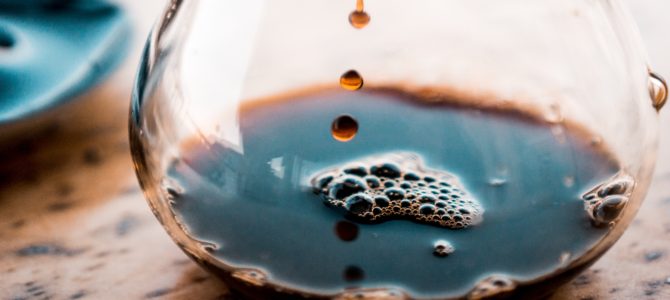MCQs with answer explanation on – Solutions Chapter -2 Class 12
Prepared by Experts
MCQ on Solutions for Class 12 CBSE. These questions are prepared by experts and also explains the concept behind answers.
Love to Learn
Question 1: Out of the following: Among molarity (M), molality (m), formality (F) and mole fraction (x) those which are independent of temperature:
- Molarity (M), formality (F)
- Molality (m), mole fraction (x)
- Formality (F), mole fraction (x)
- Mole fraction (x), molarity (M)
Answer: The correct option is (b) i.e. Molality (m) and mole fraction (X).
- We know that; Molarity (M) is defined as the number of moles of solute dissolved in one litre of solution. It can be expressed mathematically as follows:
- Molarity (M)=(No.of moles of solute)/(volume (in L) )
From the above, we conclude that molarity depends on the volume of solution and volume varies with change in temperature. Hence, molarity is a temperature-dependent quantity.
- We know that; Molality (m) is defined as the number of moles of solute per kilogram of solvent. It can be expressed mathematically as follows:
- Molality (m)=(No.of moles of solute)/(Weight insolvent (in kg) )
From the above, we conclude that molality depends on the weight of the solvent and the weight of the solvent does not vary with change in temperature. Hence, molality is temperature independent quantity.
- We know that; Formality (m) is defined as the number of formula mass of solute dissolved in a one-litre solution. It can be expressed mathematically as follows:
From the above, we conclude that formality depends on the volume of solution and volume varies with change in temperature. Hence, formality is a temperature-dependent quantity.
- We know that; mole fraction (X) is defined as the number of moles of the component to the total number of moles of all the components. It can be expressed mathematically as follows:
From above, we conclude that mole fraction depends on the number of moles of solvent and solute and no. of moles does not vary with change in temperature. Hence, mole fraction is temperature independent quantity.
Question 2: Which of the following condition is not acceptable for ideal solutions?
- 〖∆V〗_mixing=0
- 〖∆H〗_mixing=0
- Raoult’s law obeyed
- Formation of an azeotropic mixture
Answer: The correct option is (d). For ideal solutions, the enthalpy of solution and volume of mixing is zero i.e. and. It obeys Raoult’s law. But they cannot form an azeotropic mixture.
Question 3: Find: mole fraction of ammonia in a solution containing 36 g of water and 48 g of ammonia is:
- 0.415
- 0.632
- 0.585
- 0.389
Answer: The correct option is (c). Given that mass of ammonia is 48g and the molar mass of ammonia is 17g mol-1
No.of moles of ammonia (n_A )= (given mass)/(molar mass)=48/17=2.823 moles
Also, given that mass of water is 36g
The molar mass of water is 18g mol-1
No.of moles of water (n_B )= (given mass)/(molar mass)=36/18=2 moles
Now, the mole fraction of ammonia can be calculated by;
Mole fraction (X_(NH_3 ))=(No.of moles of solute (ammonia))/(No.of moles of solute (ammonia)+(No.of moles of solvent))
Mole fraction (X_(NH_3 ) )=n_A/(n_A+n_B )=2.823/((2.823)+(2) )=2.823/4.823=0.585
Question 4: Which one of the following relationships is not correct?
- ∆T_b=(K_b×1000×W_2)/(M_2×W_1 )
- ∆T_f=(K_f×1000×W_2)/(M_2×W_1 )
- ∆T_f=K_f/m
- ∆T_b=K_b×m
Answer: The correct option is (d).
We know that elevation in boiling point is given by;
∆T_b=(K_b×1000×W_2)/(M_2×W_1 ) or ∆T_b=K_b/m
And depression in boiling point is given by:
∆T_f=(K_f×1000×W_2)/(M_2×W_1 ) or ∆T_f=K_f/m.
Hence, the incorrect relation is (d) and the correct formula for this is ∆T_b=K_b/m.
Question 5: Out of the following- Which one is not a colligative property? Choose the correct option.
- Freezing point Depression
- Boiling point Elevation
- Vapour pressure Lowering
- Mass %age
Answer: The correct option is (d). Mass %age is not a colligative property.
The properties of solutions which depend on the number of solute particles and are independent of their chemical identity are called Colligative properties. These are lowering of vapour pressure, elevation of boiling point, depression of freezing point and osmotic pressure.
Question 6: Out of the following: Henry law gives the relationship between:
- Pressure and solubility
- Partial pressure and vapour pressure
- Pressure and molality
- Pressure and molarity
Answer: The correct option is (a). Henry was the first to give a quantitative relation between pressure and solubility of a gas in a solvent which is known as Henry’s law. The law states that at a constant temperature, the solubility of a gas in a liquid is directly proportional to the partial pressure of the gas present above the surface of liquid or solution.
Question 7: We have a solution containing 25g of NaOH in 750 mL of water. Determine the molarity of solution. (use molar mass of NaOH=40gmol-1).
- 0.644mol L^(-1)
- 0.563mol L^(-1)
- 0.833mol L^(-1)
- 0.934mol L^(-1)
Answer: The correct option is (c). Given that, the mass of NaOH=25g
Molar mass of NaOH= 40gmol-1. So,
No.of moles of NaOH=(Given mass)/(Molar mass)=25/40=0.625 mol
Volume of the solution in litres =(750 mL)/1000mL =0.75 L
Using
Molarity (M)=(No.of moles of solute)/(volume (in L) )=0.625/0.75=0.833mol L^(-1)
Question 8: Find mass % of glucose and NaOH if 22g of glucose dissolved in 102 g of NaOH. Choose the correct option.
- 26%, 17.74%
- 74%, 82.26%
- 40%, 31.60%
- 60%, 68.40%
Answer: The correct option is (b). Given that, the mass of glucose in the solution is= 22g
Mass of NaOH in solution is= 102g
We know that,
Mass % of a component=(Mass of the component in the solution)/(Total mass of solution)×100
Now,
Mass % of glucose=(Mass of the glucose in the solution)/(Total mass of solution)×100=22/124×100=17.74%
Mass % of NaOH=(Mass of the NaOH in the solution)/(Total mass of solution)×100=102/124×100=82.26%
Question 9: Out of following-Which option is not an application of Henry’s law? Choose the correct option.
- To increase the solubility of CO2 in soft drinks and soda water, the bottle is sealed under high pressure
- At high altitudes, climbers suffering from anoxia
- Scuba divers suffering from bends
- Malaria disease
Answer: The correct option is (d).
- To increase the solubility of CO2 in soft drinks and soda water, the bottle is sealed under high pressure. Hence, it is an application of Henry law.
- Scuba divers must cope with high concentrations of dissolved gases while breathing air at high pressure underwater. Increased pressure increases the solubility of atmospheric gases in blood. When the divers come towards surface, the pressure gradually decreases. This releases the dissolved gases and leads to the formation of bubbles of nitrogen in the blood. This blocks capillaries and creates a medical condition known as bends, which are painful and dangerous to life. Hence, it is an application of Henry law.
- At high altitudes, the partial pressure of oxygen is less than that at the ground level. This leads to low concentrations of oxygen in the blood and tissues of people living at high altitudes or climbers. Low blood oxygen causes climbers to become weak and unable to think clearly. These are the symptoms of a condition known as anoxia. Hence, it is an application of Henry law.
- Malaria is not an application of Henry law. It is a disease caused by mosquitoes. It is not related to pressure and solubility.
Question 10: Out of the following: which will show positive deviation towards Raoult’s law? Choose the correct option.
- Acetone, Ethanol
- Acetone, aniline
- Water, nitric acid
- Chloroform, benzene
Answer: The correct option is (a).
Raoult’s law in its general form can be stated as, for any solution, the partial vapour pressure of each volatile component in the solution is directly proportional to its mole fraction.
Acetone and ethanol will show positive deviation towards Raoult’s law. While others all will show negative deviation towards Raoult’s law.

